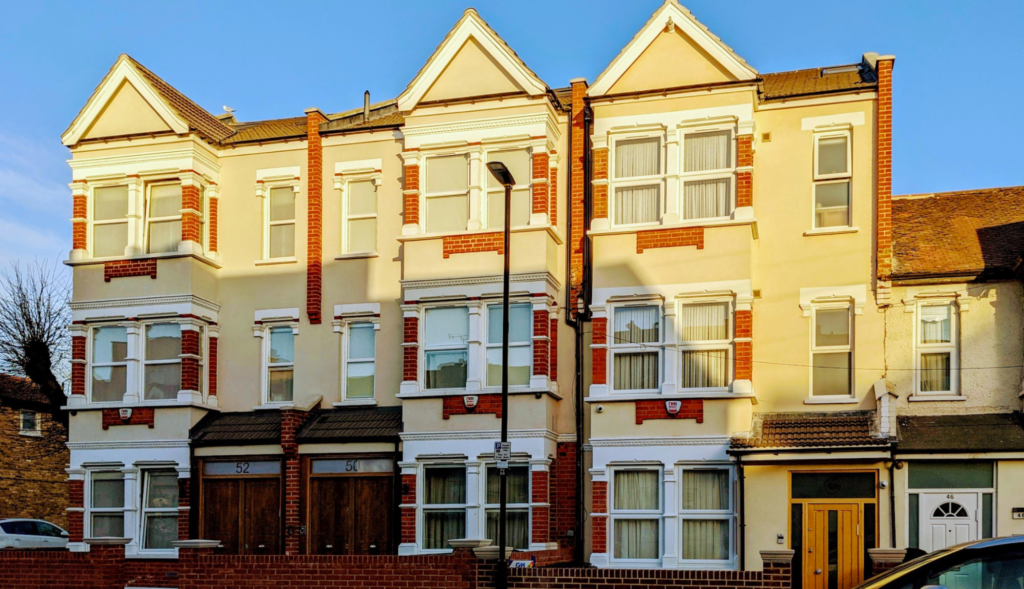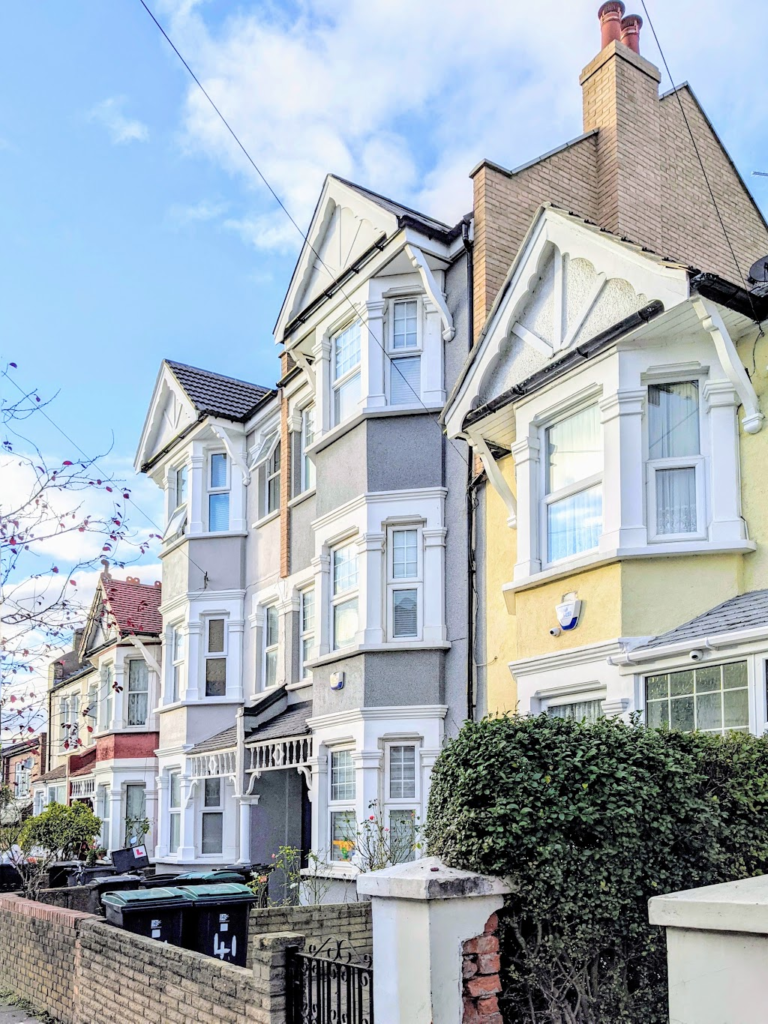The past half century of UK housing history shows a recurring cycle. First, restrictive and unpredictable planning policy creates barriers to entry and causes a housing shortage. Economists and think tanks call for planning liberalisation. Politicians heed the call and attempt to put something into practice. Their white paper or bill encounters the public, community groups, opposition forces, and home-owning voters, who force them to revise the legislation, which then makes little difference or even makes things worse by increasing the system’s unpredictability.
This spin cycle repeats because people are stuck in a zero-sum mindset, believing that change can only benefit one group if it harms another. The good news is that another way is possible, illustrated by the pathbreaking work of a neighbourhood in Haringey that we investigate in Create Streets’ new paper Learning from Tradition. South Tottenham, a pocket neighbourhood of a few thousand, has a few special features. As well as the fundamentally high quality Victorian terraced stock and good north London transport links, it is the centre of a flourishing Haredi Jewish community.
The Haredi inhabitants tend to have large families (according to a councillor, the affected area had 5.6 children per family on average). They typically find it harder to move out to the suburbs because they cannot drive or take public transport on Shabbat, nor walk further than 2,000 cubitts (about 1km). Combined with the two storey terraces in which they lived, this has led to severe overcrowding, with several cases of four children sharing a single bedroom.

After a spate of ugly dormer extensions were built by families desperate for more living space and consequent controversy, councillors and officials responded to a demand from the community for a mutually acceptable solution.
Planners created a strict visual design code. This allowed considerably more built volume than existing standards: up to 1.5 storeys, allowing as many as four rooms, and in some cases over 1,000 sqft more space. However, this was on the visually specific condition that they were sympathetic with the existing Victorian stock. This meant emulating existing colours, materials, ornament and facade patterns, resulting in houses that look as though they were built with three storeys in the first place.
Take up has been extremely high, with over 200 extensions over the ten years the supplementary planning document enabling this type of development has been in place. The standard is very good: at best, they are almost indistinguishable from Victorian terraces that were originally built at three storeys.

Most importantly, the community, which has a justified belief that development will be high quality, is on-side. When the council consulted them, three years into the policy’s implementation, about three times as many said they approved of the policy than disapproved. More than half of those polled said they strongly approved.
The broader principle is a vital one: we need to turn off the spin cycle. Development does not have to be a zero-sum game. Development need not harm existing communities or be fought by them. If new homes can make existing places better and benefit local communities without imposing large costs, then new homes can secure local support. Sympathetic, predictable, locally popular suburban ‘gentle densification’ of this type is part of the path to creating new homes for the next generation. And, heaven knows, they desperately need and deserve them.
Nicholas Boys Smith is Director at Create Streets







Join the discussion
Join like minded readers that support our journalism by becoming a paid subscriber
To join the discussion in the comments, become a paid subscriber.
Join like minded readers that support our journalism, read unlimited articles and enjoy other subscriber-only benefits.
SubscribeInteresting example.
Personally I think that housing supply will increase greatly in the next few years for 4 reasons:
1. Remote working means we can spread out around the country. Witness the price increases in the north and Wales in last year. Building new houses outside the SE is much easier, especially if we apply the lessons outlined in this article.
2. As a consequence of remote working, office space in cities will be increasingly redundant. Convert this to residential for a huge increase in housing stock.
3. Town centre shopping is history. Convert shopping centres to flats and increase the proportion of high streets given over to residential. You can still have plenty of shops, bars, restaurants, hair salons and other services among the flats.
4. Ending EU freedom of movement post-Brexit will reduce demand (particularly for rentals). This will stop the increases in supply listed above just leading to increased immigration and thus ever increasing prices.
(Now we just need to sort out the illegal immigration problem.)
The way to actually solve the housing crisis is simply to stop the hundreds of thousands of migrants immigrating to the UK which forces more homes to be built. Instead after a few years of little to no immigration the housing crisis would alleviate on its own as the native populations’ birth rate is decreasing and not growing. Thus no radical housing projects are needed instead it is an issue of immigration.
Even bringing the net population growth to below 100k a year – the norm from 1950-2000 – would curb housing demand considerably. Post-Brexit we have the ability to do this (assuming we can get deportations of illegal immigrants moving much more quickly – or ideally prevent them from arriving in the first place).
Immigrants are good – young ones, with skills, money, education, and above average IQ. Every country wants then – but the immigration laws forbid discrimination. This is made worse as the West has handed all its migration policy and enforcement over to Criminal People Smuggling Cartels.
Since Brexit, our immigration laws DO discriminate in favour of high-potential, younger applicants.
You can get a work visa if you:
Have a job offer that requires A-levels and pays over £30k
Or
Are qualified in Shortage Occupation and have a job offer that pays at least 80% of the going rate
In addition you can get a study visa if you have a place at a university.
There are other routes:
Entrepreneur visa (with a wealth requirement)
3 year visa for Australians (and possibly soon New Zealanders)
Partner visa for a non-UK citizen engaged/married to a UK citizen
The trouble that needs sorting out is with the asylum rules. We currently:
Resettle c. 10k refugees from regional UNHCR camps
Resettle BNO status people from HK
Resettle Afghans who worked with us during the war there
The problem is we also allow people to arrive here and claim asylum. This is the part of the system which is easily gamed and currently overwhelmed.
Fascinating and inspiring example, nicely explained.
I sometimes fantasise about a world in which local councils would have to send to every resident, at the end of every year, a report on planning that featured before-and-after photos of the consequences of each planning decision the council had made, together with the names and party affiliations (where relevant) of everyone who had voted for or signed off on each decision – as well as the relevant developers, architects and their lobbying operations.
Too many, not only in town or city contexts either, seem to assume that more badly-built, inappropriate and hideous new building is somehow inevitable. It isn’t, though, as the South Tottenham example illustrates. It’s perfectly possible to retain existing buildings, with all that means both for embodied carbon but also for preserving a sense of place, while allowing neighbourhoods to evolve gently and organically.
Demolition is a lazy, unimaginative solution and the sooner it ceases to be the default option for development, the better for all of us.
Sadly councils have limited say in what can be built. All standards are dictated at a national level. Large developers can afford to appeal to the govt inspector until they succeed (sadly local builders have no such luxury).
And national policy dictates how many homes each council must build each year.
As someone in construction – that looked fantastically expensive.
What comes to mind though is structural. A house built to carry a second floor and roof is not usually designed to carry a third floor and roof. It may be fortunate and be over built, but to think you can just stack more and more on foundations and walls is not so simple.
I’m not clear what has been built – presumably these were 2 storey houses and had a third added? As the author says, these were built for large families. It might help in this particular case, but the real need is for more homes for smaller families, single people, couples.
So many larger family homes have been divided up into flats and bedsits. But they weren’t designed for this use, so they have poor access, insufficient insulation, lack of privacy.
What we really need in urban areas is sympathetic buildings designed as flats, like those in the smarter parts of London. Call them ‘mansions’ for marketing purposes! But stop pretending we can keep re-using ageing housing stock – the Victorians weren’t such luddites!
My guess is they have expanded – and then been cut up into lots of small rabbit hutches.